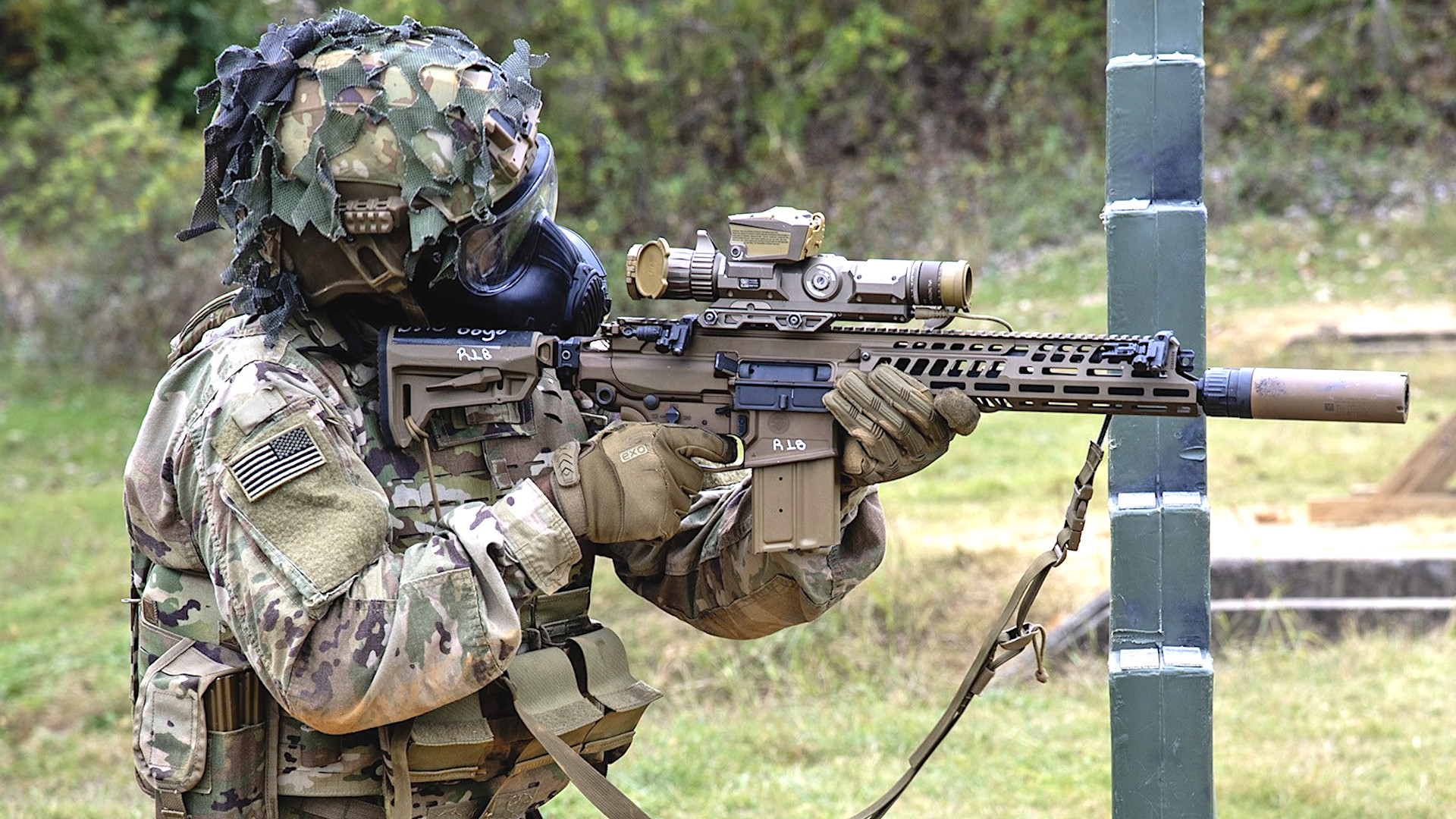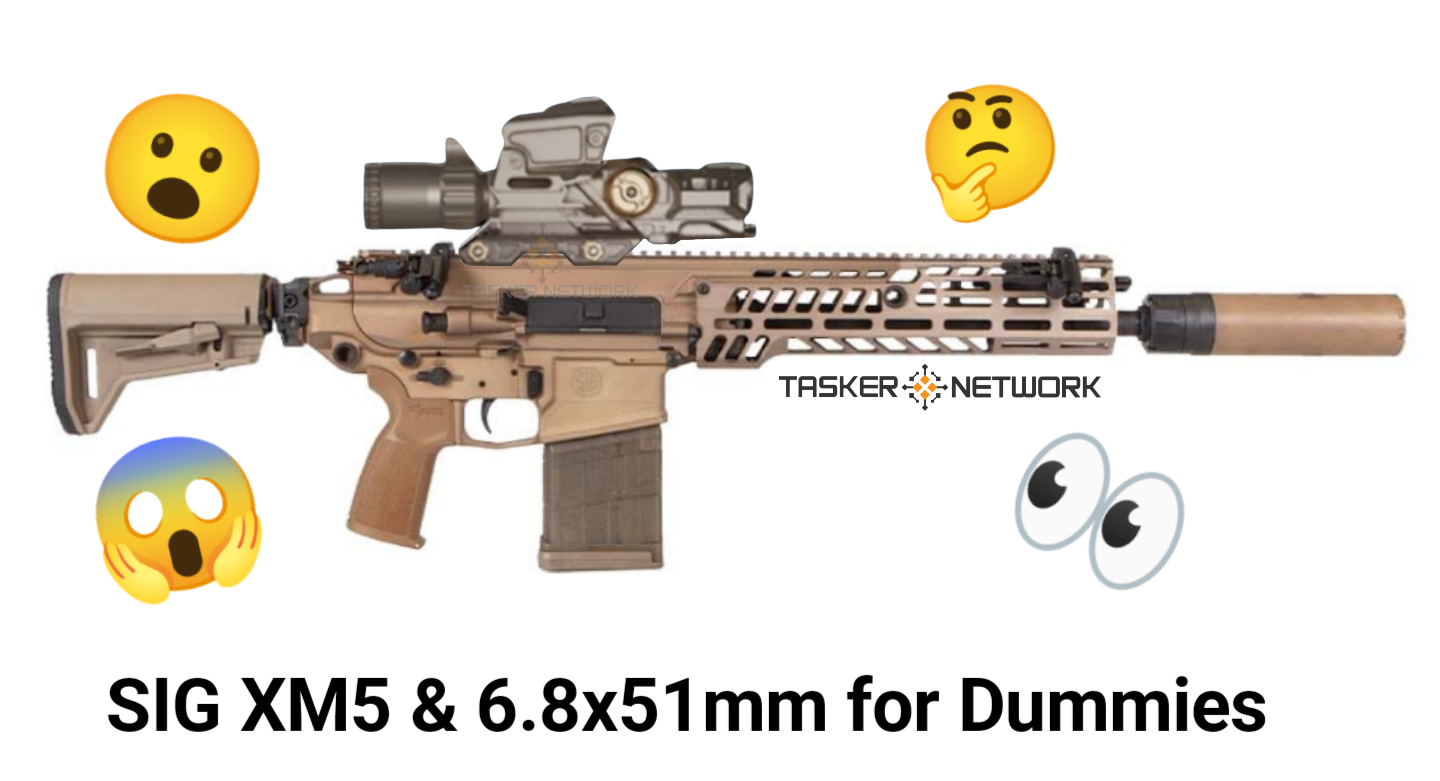Using the logic that a machine gun on high ground using plunging fire out ranges troops in a valley with M4's as a requirement for a new rifle is dumb. Of course it does, they aren't in the same class of weapon. That line of thought is just an inevitable game of one-upsmanship. Guess what over matches a PKM and a DSHKA? AWT, CAS, ATACMs, GMLRS. You know.... everything we used to pound LBP into oblivion for the last 24 years.
The next generation of weapons, munitions, systems, and mobility isn't about GWOT. DOD is like a heavy, high horsepower vehicle that someone just slammed the gas pedal on right now. Smoking tires and about to take off. In literal terms a lot of leaders want to shed unhelpful requirements of the past and modernize with a sense of urgency that I have only seen once before. Around 2002. It's all about lethality, innovating, and being able to survive a war the magnitude of WWII against an extestential enemy. It's almost like we're getting ready for something huge.

Hmmm. And quite frankly, isn't that what you want your standing military to be ready for? Your literal survival?
It is extremely common for a lot of people to go back to what they know. Everyone likes to think of themselves as clever, innovative, forward thinking. But you can just watch people continually base their opinions and assessments on some prior example.
I would also say that innovating is harder than most people give credit for. The very nature of it is that you're going to try untested variation and likely learn from failure. I am a huge proponent of learning the basics, SOPs, and fundamentals before a rank newb just starts writhing in innovation and free flow. A team, squad, or maneuver element needs a commonly understood basis for change. A known point of departure. There's definitely areas to innovate and then there's places where we don't need to reinvent the wheel. I definitely believe in a specific and targeted approach to innovation. Especially when a lot of your force is extremely young. Which it is right now, and it's becoming more so. 20 years post 9/11 has seen a massive exodus of GWOT veterans. Total swag on my part but I see a ton of O3's and SSG's without CIBs and combat patches. I see quite a few O4s and a few E7s. I'm going to guess in 5 years you're going to see fast tracking E8s and SGMs without combat experience. So we don't have a force that has a bunch of sets and reps and can just form up on "what we did on the last rotation". We have a young force that has to learn basics of lethality. And what did we do before we had combat experience? We had to simulate stress and condition through hard realistic training. Imagining the worst and preparing for the worst. That is what the vast majority of our PLT and below people need to focus on right now. As other areas of our formations figure out how to innovate.
I do firmly believe we can't just keep doing what we've been doing for the last 25 years and expect to be successful. Now is the time to leap ahead. We have more clear information and examples of how very powerful competitors can put the US in a bind that we've never felt before in the history of our nation. The only thing that is comparable is Pearl Harbor, imo.
If you want to have an opinion on what you think DOD should be doing, read some history. I recommend "Surprise, Kill, Vanish" the history of assassination, the CIA, and DOD SOF. McCrystals book outlining how we built late history targeting. Even Legacy, about the All Blacks. Specifically the chapter about how to decide when to pivot (aka innovate). How to stay ahead of a competitor. Even when you're current strategy is winning. How to stay ahead of your enemy's OODA Loop.
I will just say this one thing about myself. I'm not an officer. I have watched our military transform from a peace time force before 9/11, through GWOT, supposed "post-war competition", to what I believe is just pre-full scale combat against peers or near peers. I learned how to communicate using Morse code, PRC-104's, one time pads, analog encryption devices connected by 1" thick cables that required their own BB-390. I lived the process of how we developed and modernized. In a lot of ways we've minimized the weight and scale of equipment on soldiers. The real "load" on soldiers these days is the complexity of modern war. We have task saturated every MOS and are now trying to figure out where to shoehorn cyber, robotics, and UAS in the modern unit of action.
I'm not defending SIG or this current prototype. But I am defending DOD attempting to modernize, in general. I do not agree with the idea that we should just grab a 6 ARC, some 6mm EPR, and a few G17's and call it good. That is amateur thinking.
ETA: it's also reasonable to think that as the pace of innovation and modernization increases, the service life of equipment will decrease. Using thought processes of, "....the _____ was in service for XX years, and it's replacement only lasted XX years..." is a less relevant metric as competition increases.

 www.twz.com
www.twz.com



